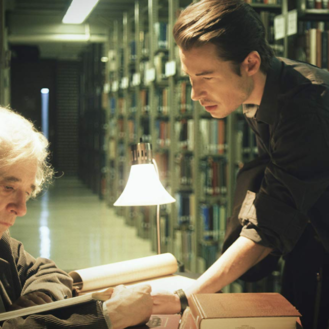The start of the year showed Toronto movie goers a more fabulous side of Baltimore, Maryland in the crowd pleasing doc I Am Divine. As January wraps itself up, those same audiences are let in to Baltimore’s inner-city brew with Lotfy Nathan’s documentary 12 O’Clock Boys.
The 12 O’Clock Boys earned their name by notoriously buzzing around busy streets on dirt bikes and carrying out wheelies that appeared to hold a near 90-degree angle. The dangerous behaviour has struck controversy between these edgy drivers and heated police officers trying to stop careless shenanigans.
With opulent cinematography and slow-motion editing, we see the happy-go-lucky mentality on each face of the 12 O’Clock Boys. They’re reckless on the roads, but when you decrease the speed, audiences see that these guys are having a good time. That doesn’t justify their dangerous driving and rebellious outlook on the law, but we can understand their motivations.
A youngster named Pug also sees what makes the 12 O’Clock Boys tick. His interests are geared towards animals, but his aspirations are aimed towards being a part of this giddy gang. His mother expresses how she feels about Pug’s misguidedness, but she does so with expletives. It also doesn’t help that some of her confrontations with other adults in the area end in taunting and occasional violence.
While the title of the doc may be 12 O’Clock Boys, the film is about much more. There’s a central theme regarding influence and how powerful it is. When Pug sees the indiscreet bikers, he treats them as heroes because of their self-righteousness and their defiance towards everyone else in these downbeat communities. In his eyes, they’re keeping positive when all the odds are stacked against them.
Pug sees that his mother loves him, but his urban upbringing suggests that rash confrontations are the answer to nearly everything.
12 O’Clock Boys follows Pug for three years. In those passing years, we see how that influence has sunk in and is standing as significance in this young man’s lifestyle. His language gets fouler and he becomes more rebellious. His tough guy persona may be cute to some, but he’s not kidding around.
Nathan’s doc uses avant-garde filmmaking effectively – and, I’m usually not a fan of this sort of documentation. I would be lying if I said that some of the absent intervening didn’t make me uneasy, but the filmmaker smartly leaves himself out of the narrative. The only time we hear someone from behind the camera talk is when they sense their curiosity can uncover more in a scene. Otherwise, Nathan lets his camera roll and lets these interesting people speak for themselves.
However, there is a difference between stabilizing your point and offering redundancies and 12 O’Clock Boys tends to lean more towards the latter as the film moves forward. Once Nathan makes his observations, we see more footage backing up his points on how shabby authority trickles downward and how it affects the lower parts of the totem pole. The documentary has enough material for a 45-minute feature, and a lot of these extra scenes come across as filler to get us to that next timeline checkpoint. It also makes us wonder if some of those aforementioned slo-mo sequences were just there to pad the duration.
12 O’Clock Boys is an “OK” doc. It’s message is engaging and Nathan’s doc is certainly one of the stronger avant-garde documentaries I’ve seen lately. But, it eventually runs out of gas and spins its wheels on what little fumes the film still has.





Be the first to comment